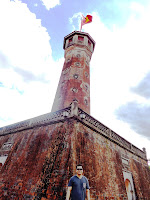Thang Long Imperial Citadel in Hanoi

The Imperial Citadel of Thang Long is the cultural complex comprising the royal enclosure first built during the Lý Dynasty and subsequently expanded by the Trần, Lê and finally the Nguyễn Dynasty. The ruins roughly coincide with the Hanoi Citadel today. The royal palaces and most of the structures in Thang Long were in varying states of disrepair by the late 19th century with the upheaval of the French conquest of Hanoi. By the 20th century many of the remaining structures were torn down. Only in the 21st century are the ruin foundations of Thang Long Imperial City systematically excavated. The central sector of the imperial citadel was listed in UNESCO's World Heritage Site on July 31, 2010 at its session in Brazil. Remains of the Imperial City were discovered on the site of the former Ba Đình Hall when the structure was torn down in 2008 to make way for a new parliament building. Various archaeological remains unearthed were brought to the National Museum to be e...

